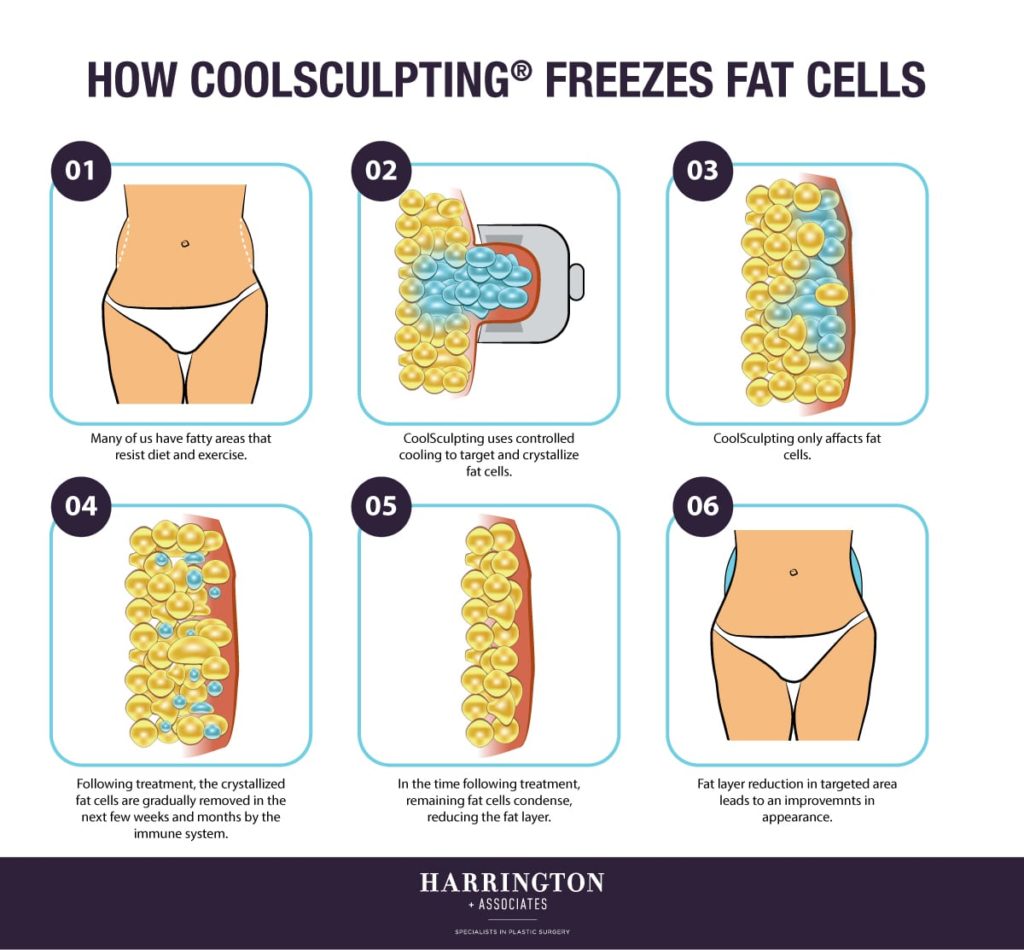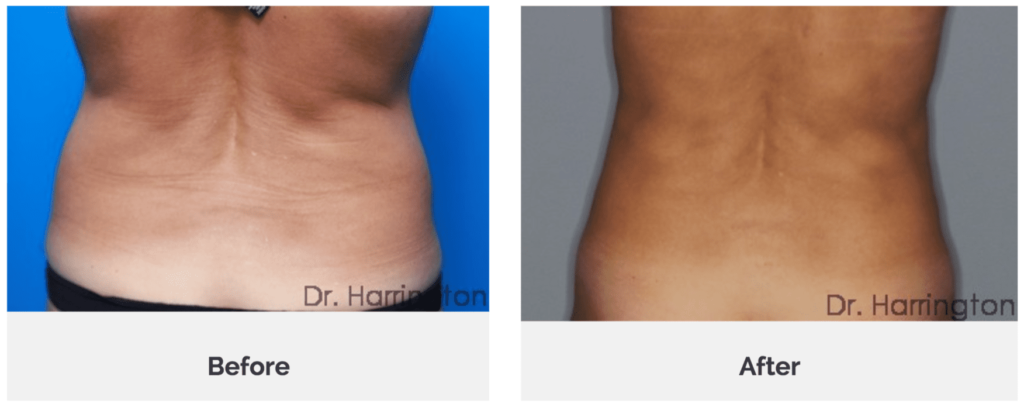Here’s the Skinny on How to Look Slimmer this Spring
As spring settles in, many of us start to assess how ready our bodies are (or aren’t) for swimsuit season. For years, liposuction has been the go-to option for people who want to get rid of fat from trouble zones such as their thighs, buttocks and belly.* Today, there are highly effective non-surgical options available for the right candidates.*
There are a lot of benefits to going the non-surgical route. Of course, these treatments are not for everyone. Consider this your non-surgical spring slim-down guide, complete with everything you need to know about the top non-surgical body contouring procedures and whether one of them is right for you.
Choosing between Liposuction and Non-Surgical Options
As you consider your options for body contouring, you’ll have to weigh the pros and cons of non-surgical procedures vs a body contouring surgery such as liposuction. In order to make the best decision for you, it’s important to understand what happens during each procedure, what kind of results to expect and who is a good candidate.
Liposuction: A Tried-and-True Body Contouring Solution
Liposuction is still hugely popular, but recent advancements in non-surgical techniques offer some very promising alternatives.
Liposuction is one of the most popular plastic surgery procedures among both men and women, and for good reason. Lipo can be a very effective way to remove exercise-resistant fat cells from targeted areas of the body.* During liposuction, a plastic surgeon removes fat from unwanted areas using a small handheld tool called a cannula.*
Liposuction has evolved over the years, and the techniques and tools used today are far more sophisticated than before. A board-certified plastic surgeon can take a multifaceted approach to liposuction in order to more effectively and precisely sculpt your figure.*
Advantages of Liposuction vs Non-Surgical Methods
- Liposuction tends to produce more dramatic results than non-surgical alternatives*
- Since fat cells are physically removed at the time of treatment, liposuction results can be seen sooner than with non-surgical methods such as CoolSculpting®*
- In general, more fat can be treated at once with liposuction than with non-surgical treatments*
Disadvantages of Liposuction vs Non-Surgical Methods
- Liposuction is major surgery, and carries with it all the risks inherent with any surgical procedure
- You will have to be put under anesthesia and will subsequently need someone to drive you home from surgery and stay with you for 24 hours
- There will be pain and discomfort during your recovery*
- Your activities will be restricted while you recuperate and you’ll have to take time off work*
- You will likely need to take prescription pain meds for relief in the initial recovery stage
If you’re not sure whether liposuction or a non-invasive procedure is better for you, book a consultation with a board certified plastic surgeon who is experienced with body contouring procedures.
Your Body Contouring Consultation

What to Ask at Your Consultation
- Are you board certified? If you are considering having liposuction, it is imperative that you only work with a plastic surgeon who is board certified. This ensures that he or she adheres to the strictest standards in health, safety and quality.
- How experienced are you? It’s okay to ask a plastic surgeon how long he or she has been doing liposuction as well as how often. Liposuction is a delicate procedure and a plastic surgeon who is skilled and experienced can customize it to fit each person’s unique anatomy and aesthetic preferences.
- Who does your non-surgical treatments? When you talk to your plastic surgeon about non-invasive body contouring procedures, find out about the credentials and qualifications of the technicians working under him or her.
Looking at Results Photos
A really important part of any consultation is looking at before-and-after pictures of other people who have had the procedures you’re considering. Here are some pointers to help you know what to look for when you’re checking out that before-and-after portfolio.
- Make sure it’s clear which procedures the people in the photos have had and whether they had a combination of procedures, as well as how many treatment sessions they had.
- Always check that the angle and type of lighting is consistent in both images.
- The subject should be standing in the same position in both photos.
- Photos should not be digitally manipulated.
Things to Tell Your Plastic Surgeon
To give you more accurate and valuable advice, it’s very important for your surgeon to get the whole truth about you, your lifestyle and your goals. Tell him or her:
- Your medical history and whether you have any current conditions. If you do, you may want to consult with the doctor who treats you for it and get the go-ahead for any procedures you’re considering.
- Your weight loss story: If you have lost previously lost weight, make sure to tell your plastic surgeon. Include information about how you lost the weight, whether it was through bariatric surgery or diet and exercise. It’s important for him or her to know how long ago you lost the weight and whether it has been comfortable for you to maintain your current weight. If your weight has been fluctuating, it’s best to get it under control, otherwise you risk losing your body contouring results when you gain weight back again. Being honest about your health and lifestyle habits at your consultation is necessary if you want to get the best results possible.
- Your lifestyle and habits: Tell your plastic surgeon a little bit about the type of diet you eat, and whether you get enough sleep. Most importantly, tell your doctor if you smoke, drink or take any other substances or supplements.
- Your goals and expectations: Tell your plastic surgeon what you hope to achieve from body contouring. It’s not a bad idea to bring pictures to better illustrate your idea of ideal results. Depending on your starting point and what you hope to achieve, your plastic surgeon may recommend one or more body contouring procedures.
Now, let’s look at the most popular noninvasive body contouring treatment, CoolSculpting®.
A Brief History of CoolSculpting®
Borne of a very simple concept, CoolSculpting® has revolutionized the beauty world and the way we deal with fat loss. It started with two researchers and their observation that children who frequently sucked on popsicles seemed to develop dimples on their cheeks. Further investigation showed that fat cells will die off if exposed to particular temperatures for a period of time.
In addition, it was discovered that fat cells are much more sensitive to the cold than other cells are. This means that if cold could be applied in a very precise manner, the tissues surrounding the fat would not be damaged.* These fascinating breakthroughs were used to develop the science of cryolipolysis, or what we know as CoolSculpting®. There is no similar procedure currently available.
What Happens during CoolSculpting®
During CoolSculpting®, a special applicator is used to apply the cold. The temperature is monitored and controlled very precisely to prevent freezing or damage to surrounding tissues.* Most people do not experience discomfort beyond the initial cold sensation, which tends to subside after the first few minutes.* The cold causes the fat cells to crystallize and ultimately die.*
If you’re thinking about a non-surgical spring slim-down with CoolSculpting®, don’t have it done just anywhere. It’s important to work only with a certified provider who has been specially trained using cryolipolysis. It’s always best to work with a medical spa that is run under the guidance and supervision of a board certified plastic surgeon. Choosing a certified CoolSculpting® Technician means they’ve received training right from CoolSculpting® University.
Consider finding a facility that offers DualSculpting, where two areas can be treated simultaneously. This cuts down on overall treatment time. Something else to look for is a practitioner who “stacks” treatments. This refers to having an area treated, warming it up, then treating it again. Stacking this way can reduce or eliminate the need for follow-up treatments and give you more comprehensive results, faster.* Gradually, the crystallized fat cells are eliminated from your body via the natural functions of your immune system.*
What to Expect After CoolSculpting®
You’ll should be able to go right back to your regular activities after having CoolSculpting®, though you may experience some mild swelling and slight discomfort.* Since it takes time for the fat cells to leave your body, it takes time to see the results from CoolSculpting®.* While individual experiences vary, most people are able to see some change after a few weeks, with the final results developing around 3 months or more after treatment.*
Being a Good Candidate for CoolSculpting ®
If you’re considering CoolSculpting®, you have to ask yourself the right questions and notice signs indicating you might be a good candidate:
- You have stubborn pockets of fat that are resistant to diet and exercise.
- You are in good general health, but struggle with “problem areas.”
- You can maintain a steady weight.
- You want to look slimmer without surgery or downtime.*
- You’re at or close to your target weight.
The Limitations of Body Contouring Procedures
While the procedures discussed in this guide can produce beautiful results and facilitate dramatic transformations in many people, they are not the solution for everyone.* It’s important to understand what body contouring treatments, whether surgical or non-surgical, can’t do:
- Body contouring procedures will not help you lose weight. While it’s possible to lose a marginal amount of weight due to the removal of fat with liposuction or CoolSculpting®, these should never be considered weight loss procedures.* However, people often appear as though they’ve lost weight after a fat removal procedure like lipo or CoolSculpting®.
- The results only last as long as you maintain them.* Getting body contouring won’t immunize you against future weight gain that could compromise your results and maintain a steady weight. This means eating a healthy diet and working out regularly, just like you had to do before body contouring.
- Fat reduction treatments won’t help with excess skin. Often, people who are struggling with cellulite or fatty trouble zones also have some sagging abdominal skin. The only way to effectively eliminate this is by having a tummy tuck.* This is another reason it’s good to see a plastic surgeon. He or she will be the best person to help you decide if you might be a good candidate for a tummy tuck in addition to, or instead of, non-surgical slimming procedures.
*This information is for education only, and is not meant as a guarantee of results. Your results may vary.


